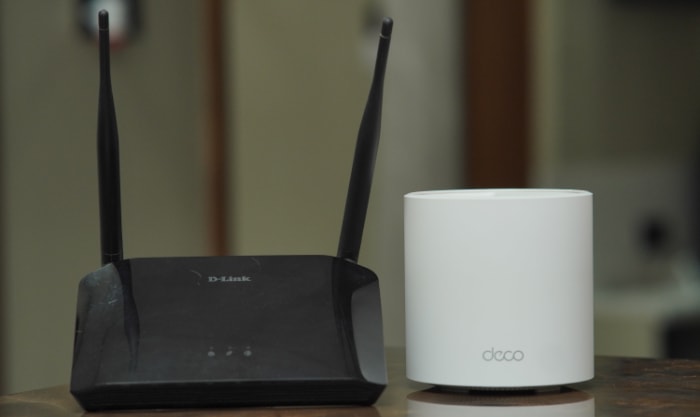What Is a Network Driver? Why It Matters

Network drivers are the unsung heroes that power the seamless internet browsing, file sharing, and media streaming we often take for granted. Acting as a critical interface between a computer's operating system and its network hardware, these drivers play a vital role in our day-to-day digital experiences.
The Role of Network Drivers
Network drivers hold a critical position in the architecture of computer networks. They act as the translator and facilitator between your computer's operating system and the network hardware.
Let's unpack how they accomplish this, the types of hardware they interact with, and why their role is indispensable.
Enabling Communication Between Hardware and Software
A network driver’s primary job is to enable a dialogue between the operating system and the network hardware. When you request a webpage or send an email, the operating system generates data packets.
These packets need to be sent over the network using hardware like Network Interface Cards (NICs) or modems. The network driver translates these packets into a language that the hardware can understand and transmit.
Functioning as an Intermediary
Imagine network drivers as interpreters in a multi-language conference. On one end, you have the operating system speaking its language, and on the other, you have network hardware that understands a different set of instructions.
The network driver stands in between, ensuring that messages (data packets) from the operating system are correctly interpreted and processed by the network hardware. This process occurs rapidly, often unbeknownst to the user, ensuring smooth network operations.
Types of Network Hardware That Require Drivers
It's not just the conventional NICs that need network drivers. Various types of network hardware, such as modems, wireless adapters, and even some specialized USB network devices, require specific drivers to function correctly.
The operating system cannot interact directly with these pieces of hardware; it requires the appropriate network drivers to facilitate this communication.
Why Network Drivers Are Indispensable
The absence of a compatible network driver would render any networking hardware useless, as the operating system couldn't communicate with it. They are essential for initiating and maintaining the network connection, translating data packets, and ensuring error-free data transmission.
In a way, they are the unsung heroes that maintain the flow of data in and out of your computer, making internet browsing, file downloading, and online gaming possible.
How Network Drivers Work
The functioning of network drivers is a complex yet fascinating operation, seamlessly linking your operating system with your network hardware. We will explore the fundamental processes involving network drivers, including hardware initialization, data packet translation, and the role of Application Programming Interfaces (APIs).
Initialization of Network Hardware
When you boot up your computer, one of the early tasks performed by the operating system is to initialize the network hardware. This involves loading the appropriate network driver into the system memory.
The driver then checks the hardware components like NICs and modems to ensure they are operational and ready for data transmission. This initialization establishes the groundwork for all future network-related tasks.
Data Packet Translation and Transmission
Whenever you request an online resource, your operating system converts this request into data packets. These packets then need to be sent through your network hardware to reach their destination.
The network driver plays a crucial role here by translating these operating system-generated packets into a format compatible with your network hardware. This ensures that your hardware can correctly process and transmit the data over the network.
Error Checking and Fault Tolerance
Network drivers are not just translators; they also act as quality control agents. They perform checks on the data packets for any errors or anomalies. If an error is detected, the driver takes corrective action, either by requesting the operating system to resend the packet or by correcting the error itself.
This error checking and fault tolerance are essential for maintaining a stable and reliable network connection.
Role of Application Programming Interfaces (APIs)
Application Programming Interfaces, or APIs, are sets of rules and protocols that allow software components to communicate with each other. In the context of network drivers, APIs facilitate the interaction between the operating system and the driver software.
These APIs define the ‘language' and methods by which these two components exchange information, ensuring that the network driver can interpret commands from the operating system and translate them into actions that the network hardware can perform.
The Seamless Integration of Software and Hardware
All these operations—initialization, translation, error checking, and API communication—happen almost instantaneously and behind the scenes. For the user, the result is a smooth and effortless experience, whether browsing the web, streaming content, or sharing files.
Network drivers are key to this seamless integration, maintaining a symphony of interactions between your computer's software and hardware components.
Installing and Updating Network Drivers

Keeping your network drivers up-to-date is vital for optimal system performance and security. Here, we will discuss the steps involved in installing a new network driver and keeping it current, covering both automatic updates via the operating system and manual installation.
Automatic Updates via Operating System
Most modern operating systems come equipped with a built-in mechanism for updating drivers, including network drivers. When connected to the internet, the operating system scans for available updates for all installed hardware.
If an update is found for your network driver, the system automatically downloads and installs it. This process offers a hands-free approach to maintaining up-to-date drivers.
Manual Installation of Network Drivers
While automatic updates are convenient, they might not always get you the latest driver version, or you may need to install a driver for specialized hardware. In such cases, manual installation becomes necessary.
This usually involves downloading the driver package from the vendor’s website and executing it to replace or update the existing driver. The manual installation process allows more control and often includes advanced configuration options for the driver.
Importance of Compatibility
When manually installing a network driver, ensuring that the driver is compatible with your operating system and network hardware is crucial. Installing an incompatible driver can lead to a range of issues, from minor malfunctions to complete loss of network connectivity.
Always refer to the hardware manufacturer's guidelines for information on compatibility.
Security Patches and Updates
Network drivers, like any other software, can have vulnerabilities that hackers might exploit. Therefore, it's essential to install updates as they become available.
These updates often contain security patches to fix known vulnerabilities and improve the driver's performance and stability.
Keeping Drivers Current for Performance and Stability
An outdated network driver can be a source of multiple problems, including slower network speeds and intermittent disconnections. Updated drivers are optimized for performance and are usually more stable than their older versions.
Regularly updating your network driver ensures you are getting the most out of your network hardware and enjoying a stable, fast, and secure connection.
Common Issues and Troubleshooting
Despite their critical role in ensuring seamless network connectivity, network drivers are not immune to issues. Problems can arise from various factors such as driver conflicts, outdated software, and hardware incompatibility.
Here we discuss common problems and how to resolve them, which is vital for both average users and IT professionals.
Driver Conflicts
Driver conflicts often occur when multiple drivers try to control the same hardware, usually after the installation of a new device or software. Symptoms may include sluggish network performance or complete loss of connectivity.
To resolve this, you may need to uninstall the conflicting drivers from the Device Manager in Windows or similar utilities in other operating systems, and then reinstall the correct driver.
Compatibility Issues
Hardware compatibility problems are usually seen when you update your operating system or when you connect new network hardware like a USB Wi-Fi adapter. The driver designed for the previous version of the OS or different hardware may not work as expected.
To address this, you should download and install a driver that matches your current OS and hardware specifications from the manufacturer's website.
Corrupted or Outdated Drivers
Corrupted drivers can manifest in many ways, including frequent disconnections, reduced network speeds, or the dreaded “blue screen of death” in extreme cases. Outdated drivers can likewise cause various issues, including suboptimal performance.
The best way to resolve these issues is to update or reinstall your network drivers.
Built-In Diagnostic Tools
Modern operating systems come equipped with diagnostic tools that can identify and sometimes even fix network issues. Running these diagnostics can often point you in the right direction for troubleshooting.
For instance, Windows has a built-in network troubleshooter that can automatically identify and attempt to fix known issues.
Manual Troubleshooting Steps
If built-in diagnostics don't solve the problem, manual troubleshooting becomes necessary. Steps can include checking physical connections, verifying IP configuration, and using command-line utilities like ping and traceroute to diagnose network reachability.
These steps can help identify whether the issue lies in the network driver, hardware, or even external factors like ISP outages.
Conclusion
Network drivers serve as an essential bridge between your computer's operating system and its network hardware. Through their roles in hardware initialization, data packet translation, and error checking, they maintain the robustness and efficiency of your network connections.
Whether it's browsing the internet, streaming media, or sharing files, these drivers work tirelessly behind the scenes to make it all possible.
Moreover, keeping these drivers updated is not just a matter of performance but also of security. Both automatic and manual methods offer different advantages, and the best choice depends on your specific needs and technical proficiency.
Compatibility and regular updates are key factors in ensuring that your network remains functional and secure.
When problems do arise, understanding the common issues can be immensely helpful. Be it driver conflicts, compatibility issues, or outdated drivers, knowing how to troubleshoot effectively can save time and prevent further complications.


